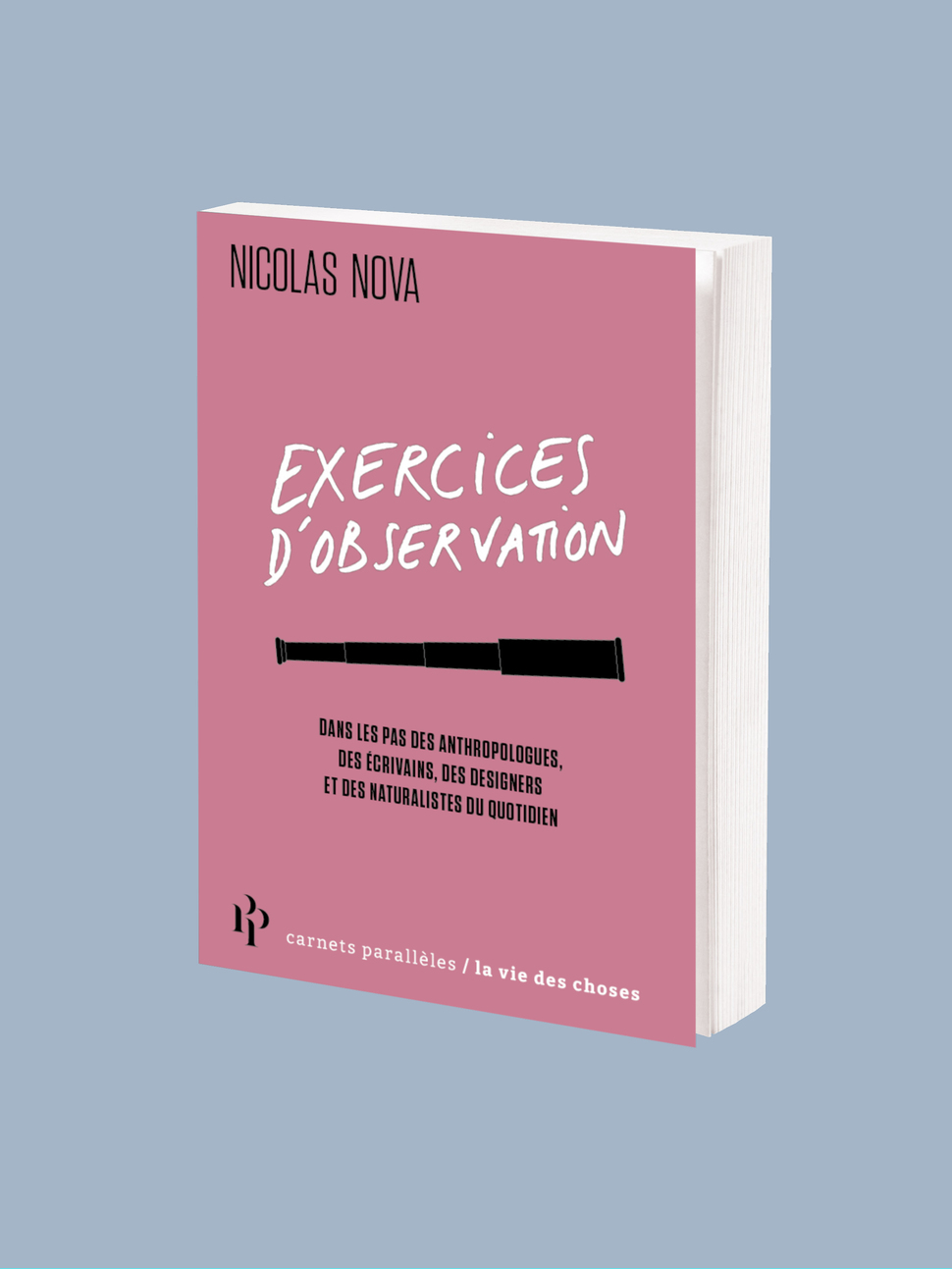Some (brief) writing instructions proposed by Nicolas:

1. Exhaustion
Wherever you are, spend ten minutes making a systematic inventory of what's happening around you.
2. Collection
In a sufficiently inhabited space, downtown or in a commercial area, walk for at least thirty minutes and note down the words and phrases you encounter.
3. Object lesson
Find twenty-five questions to ask yourself about any element of the world around you (an object, a mineral, an animal), without necessarily trying to answer them. Present these questions as a random list.
4. Catching on the fly
Go to a public place (café, park, public bench, public transport). Get close to a group of two or three people and take notes about the ongoing discussion, focusing on capturing maximum details.
5. Operational sequence
Select a codified activity (preparing a cooking recipe or an accessible religious ritual, repairing an object, manufacturing an object at an artisan's). Document each operation by observing isolated gestures, words spoken, and possible previous interactions with other things and beings, during and after this activity.
6. Nooks and crannies
In a more or less circumscribed territory, observe the less accessible corners at first glance, discreet passages, corners, interstices, any nooks. Take photos, draw or record all the things and beings you encounter there. Produce an alphabet book composed of a list and a short text organized in alphabetical order.
7. Survey
Go to any place (urban or suburban), but with a certain density of human traffic. Equip yourself with a smartphone. Document the names of Wi-Fi networks while walking along your chosen route. Produce a map representing these elements.
8. Portrait
Go to a somewhat lively place and enter into discussion with a person of your choice, asking for their agreement. Try to gather maximum information about them through direct observation and exchange. Then write in small paragraphs the portrait of this person, including the elements that characterize them.
9. Participant observation
Participate in a collective activity (shared community garden, religious ceremony, night social outreach, tourist visit, repair café) having previously asked permission to do so, and contribute as much as possible. Help as best you can without documenting anything at the moment. In the evening, when calm, write a text describing the activity in question, its organization (role of each person, possible unspoken elements), and your impressions or surprises.
10. Mobile methodology
Go to a place with a regular or non-regular user of this place. Walk with this person for about twenty minutes, suggesting they guide you through this territory. Ask them to describe it and comment on the perceived and felt atmosphere during the journey. Ask the person to produce an annotated plan that reconstructs the path taken, impressions, and striking aspects.
11. Surveying
During a wandering, note all objects that have been diverted from their initial use. To notice them, pay attention to the possible presence of DIY of all kinds, traces of wear or discordant colors, use of tape, strings, disparate materials, or approximate signage (arrows, messages, scribbled drawings).
12. Gathering
Collect all small objects (artificial or natural) encountered during your walk: horse chestnut husks, public transport tickets, dead leaves, plastic debris, leaflets, bird feathers, etc. Put them in a bag or jar, and then place them on a large sheet of paper on the ground (take photos if your findings repulse you or if the observables are too voluminous). Produce a classification.
The list of observation exercises proposed by Nicolas:
Production:
- #1 (In)exhaustivity
- #2 Series of questions
- #3 Path study
- #4 Surveys
- #5 Conversation records
- #6 Gestures and postures
- #7 Nooks and crannies
- #8 Floating observation
Interaction:
- #9 Manipulate
- #10 Informal interviews
- #11 Participant observation
- #12 Commented journeys
- #13 Voluntary disruption
Compilation:
- #14 Zone monitoring
- #15 Thematic compilation
- #16 Material inventory
- #17 Idiomatic collection
- #18 Collect/Classify
- #19 Your turn
Where to get Nicolas's book:
If you don't have it (digital version available): http://www.premierparallele.fr/livre/exercices-dobservation
*Nicolas Nova, Observation Exercises. In the footsteps of anthropologists, writers, designers and naturalists of the everyday, Paris, Premier Parallèle, coll. "Parallel Notebooks / the life of things", 2022, p.13